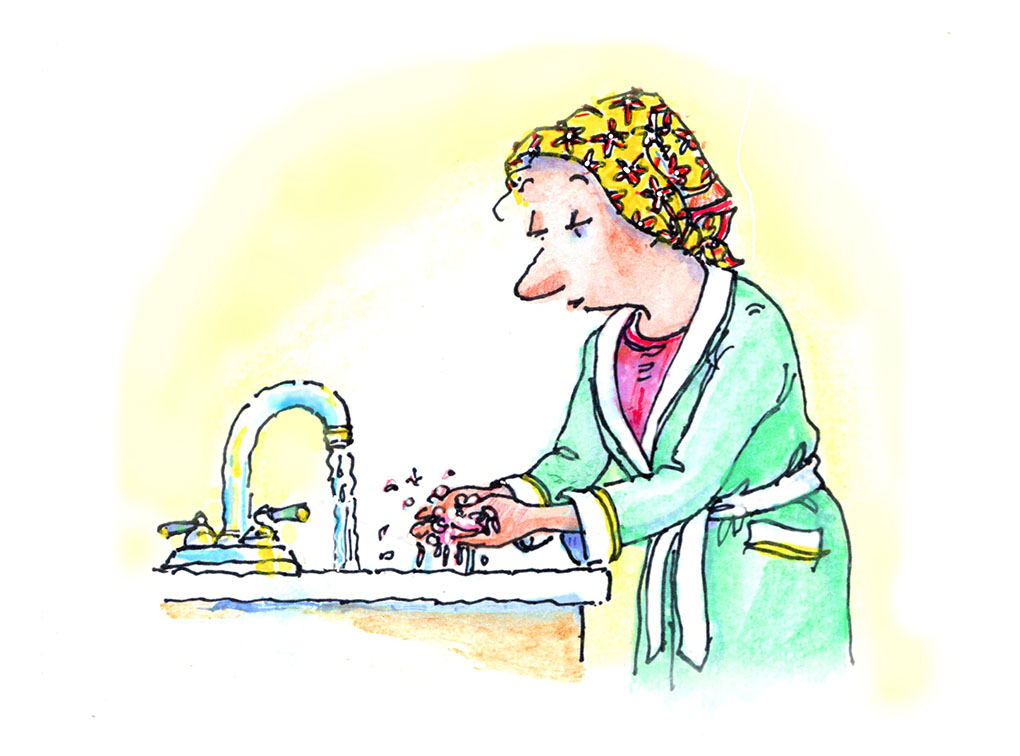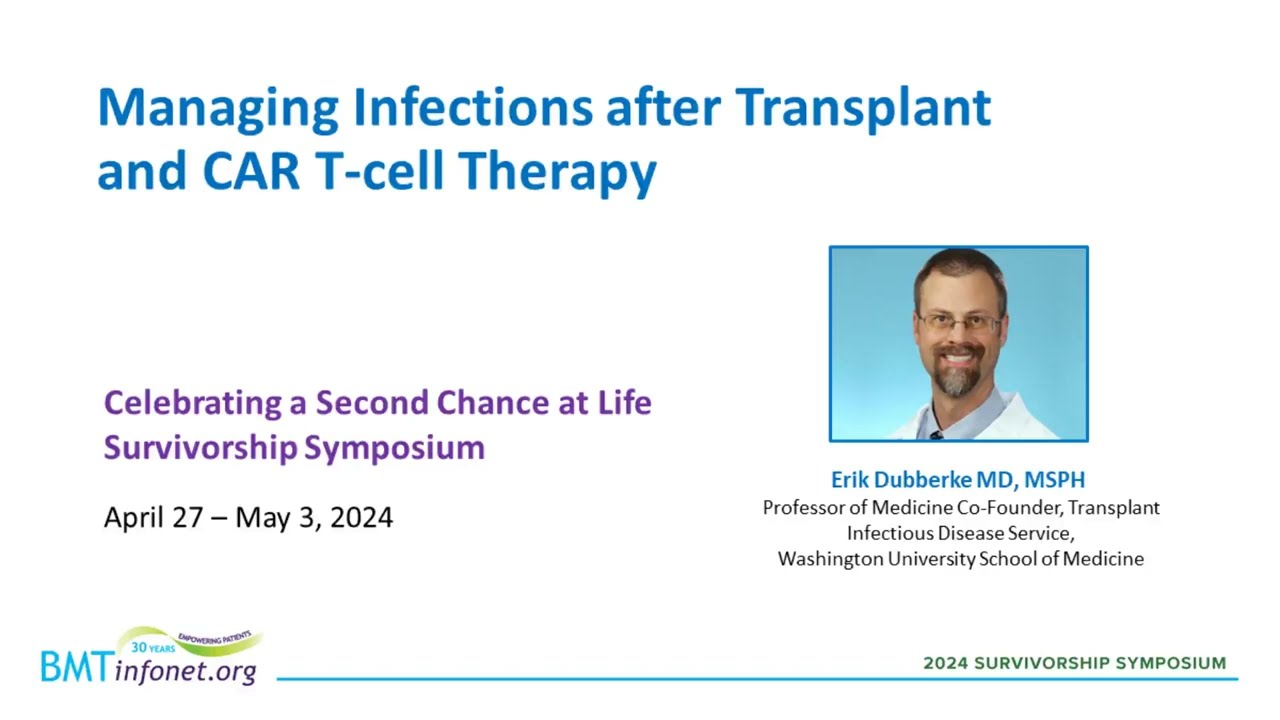Preventing Infection
Wash Your Hands
Your medical team will give you guidelines to help prevent infections until your immune system recovers. The most important of these is frequent, thorough handwashing with soap and water before and after:
- eating or preparing food
- taking medications
- touching catheters and wounds
 Be sure to wash your hands after:
Be sure to wash your hands after:
- changing diapers (if you are permitted to do so)
- touching plants or dirt (if you are permitted to do so)
- going to the restroom
- touching animals
- touching bodily fluids or items that might have come in contact with bodily fluids, such as clothing, bedding, or toilets
- going outdoors or to a public place
- removing gloves
- collecting or depositing garbage (if you are permitted to do so)
Avoid Infectious Agents
During the first six months after transplant, and longer for patients on immunosuppressant drugs, you'll want to avoid exposure to sources of infection. Your transplant center may recommend that you avoid:
- crowds
- people who have, or have been exposed to infection
- people who were recently vaccinated for chicken pox
- gardening or digging in dirt
- smoking or being around people who smoke cigarettes, cigars, a pipe, e-cigarettes, or marijuana
- walking, wading, swimming, or playing in ponds or lakes
- construction sites and remodeling projects
- well water that has not been treated
Can You Have Pets in the Home After Transplant?
Rules vary among transplant centers as to whether you can have pets in your home while you are recovering.
Your transplant center may ask you to avoid:
- contact with an animal that is sick
- reptiles such as lizards, snakes, turtles, and iguanas and items they touch
- juvenile pets (juvenile pets are more likely to scratch than mature pets)
- chicks and ducklings
- exotic pets such as monkeys or chinchillas
- cleaning litter boxes or cages, disposing of animal waste, or other activities that put you in touch with animal feces
- touching bird droppings
- cleaning fish tanks
Your transplant center may also recommend that you:
- feed pets only high-quality commercial food or thoroughly cooked human food
- keep cat litter boxes away from areas where food is prepared or eaten
- keep cats indoors
- not adopt stray cats
- cover backyard sandboxes to prevent cats from using it as a litter box
Re-vaccination
After a stem cell transplant, it is likely that protection against some infections provided by previous vaccines will be lost or depleted. International consensus guidelines on vaccination after transplant suggest that patients be re-vaccinated 6-18 months after transplant for:
- diphtheria
- tetanus
- pneumococcus
- Hemophilus, influenza type B
- polio
The guidelines recommend waiting at least two years after transplant to receive the MMR live virus vaccine for measles, mumps, and rubella.
Talk with your transplant team about when you should be re-vaccinated and whether it is advisable for you to get an annual flu shot.
COVID-19 (SARS-CoV-2 virus)
The COVID-19 virus is a concern for patients with a weak immune system. Transplant recipients ands those with whom the patient is often in contact should receive recommended vaccines to minimize the risk of developing a severe COVID-19 infection. Ask your transplant team when you should start COVID-19 vaccinations after transplant.
If you develop a COVID-19 infection, it may persist and can cause pneumonia. There are treatments for COVID-19 which can help resolve the infection more quickly
Better Safe Than Sorry
At the first sign of any fever or infection, immediately call your doctor. Infections that you would normally ignore can pose a serious threat while your immune system is weak. Infections are often easier to treat if detected early.
Next Page: Nutrition and Eating Difficulties



